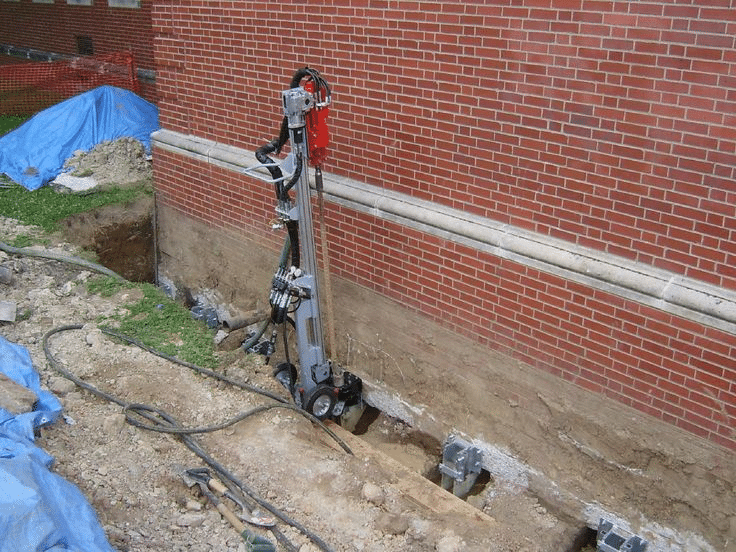How to Install Concrete Stormwater Pits
Protecting communities from the devastation of storms and floods requires effective stormwater management. The system relies heavily on concrete stormwater pits, which efficiently collect and channel runoff away from sensitive locations.
Any homeowner or builder would benefit from knowing how to set up one of these pits. This article will walk you through the whole process of constructing concrete stormwater pits, which will serve as the backbone of your water management system.
What is a Stormwater Pit, and How Does it Work?
All of the stormwater runoff is collected in a stormwater pit, and then it is directed through reinforced concrete pipes. The linked pipes drain the water away, and their design allows them to handle enormous amounts of stormwater runoff, preventing flooding. Precast concrete is used to create stormwater pits, and these pits always include “knockouts” for piping installation.
When it rains in a natural environment, rainwater is absorbed into the earth. Unfortunately, stormwater cannot be absorbed in metropolitan areas or artificial surfaces. Stormwater runoff is the result of this. Flooding and river contamination are more likely when stormwater runoff isn’t properly managed.
The proper collecting and redirection of stormwater runoff depend on installing stormwater pits. Rainwater pits are installed strategically to collect and contain rainwater runoff before associated pipes transport the water away.
Necessary Preparations
Preparation is the first and most important phase of every installation. These prior steps are essential for a smooth and long-lasting installation.
Site Assessment
Determine where it would be best to dig the stormwater pit on the land. Think about things like the slant of the land, the location of nearby drainage systems, and the rules and laws of the area.
Excavation
Ensure enough room for the pit and drainage connections when excavating the allocated area. Dig efficiently while adhering to all necessary safety measures.
Concrete Pit Installation
Now that everything is in place, you can start working on the concrete stormwater pit’s installation, which is a complex task. Focus on accuracy and carry out each step exactly as described.
Base Preparation
Build a solid foundation by compacting the dirt to the desired density and level. This process is a very important stage in assuring the safety and durability of the pit.
Pit Placement
The precast concrete pit must be carefully lowered into place and precisely aligned with the drainage system. Make sure the pit sits flat on the ground using a level.
Connection and Sealing
Connect the storm drain to the existing drainage system safely and reliably. Use the right sealing methods to ensure your system is airtight and won’t leak.
Backfilling and Compaction
Compact the fill material around the pit to prevent settlement and structural damage.
Post-Installation Considerations
The effectiveness and durability of the stormwater pit depend on the steps taken once installation is complete.
Regular Maintenance
Maintaining the pit regularly will keep it clear of obstructions and debris. This preventative measure guarantees the stormwater management system’s consistent performance.
Inspection and Repairs
Inspect it regularly for any symptoms of damage or wear. Take care of any problems immediately to stop water seepage or further damage to the building’s structure.
Benefits of Stormwater Pits
Installers can get many benefits from using precast stormwater pits, and here are some of them:
Comprehensive Support
There is a comprehensive installation manual and a team of professionals to lend a hand on-site.
Cost Benefits
Costs associated with labor, props, and storing materials on-site have been reduced.
Custom-Made
Fabricated with precise heights and pipe penetrations to suit the specifications of your stormwater network design.
Extensive Range of Sizes
Adapting to the requirements of the stormwater network set by the local authorities.
Faster Construction
Precast production cuts construction time on-site by about 75% compared to cast-in-situ processes.
High-Quality Durable Product
Made with the most cutting-edge molds and assembly methods.
Highly Versatile
Completely interchangeable with all Humes curb inlet systems, stormwater pipes, and other stormwater drainage products. Pits created to order can also be junction pits for utilities, including power, gas, and phone lines.
In-house Design Capability
Detailed manufacturing and installation drawings are produced using our purpose-built software.
Reduced Environmental Impact
Less waste, noise, and debris will be generated during construction using precast.
Trafficable
Designed for SM 1600 traffic loading (additional load classes possible), in compliance with the Australian Standard for Bridge Design AS 5100.5.
Build Resilience Through Concrete Pits
A thorough familiarity with the fundamentals and a rigorous commitment to execution are essential for embracing the process of creating concrete stormwater pits. Following the measures suggested in this article, you may contribute to good stormwater management, safeguarding your property and the surrounding ecosystem.







